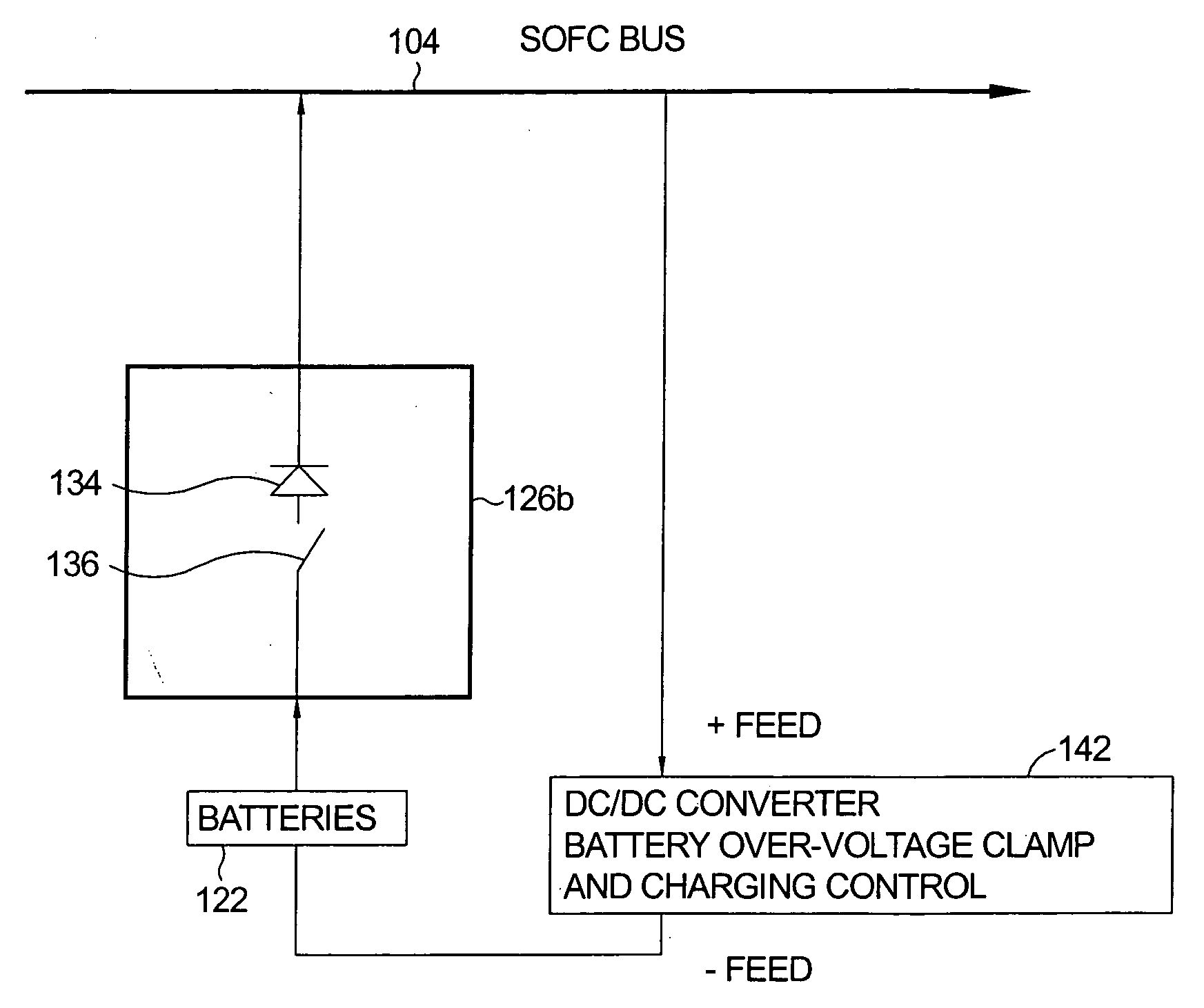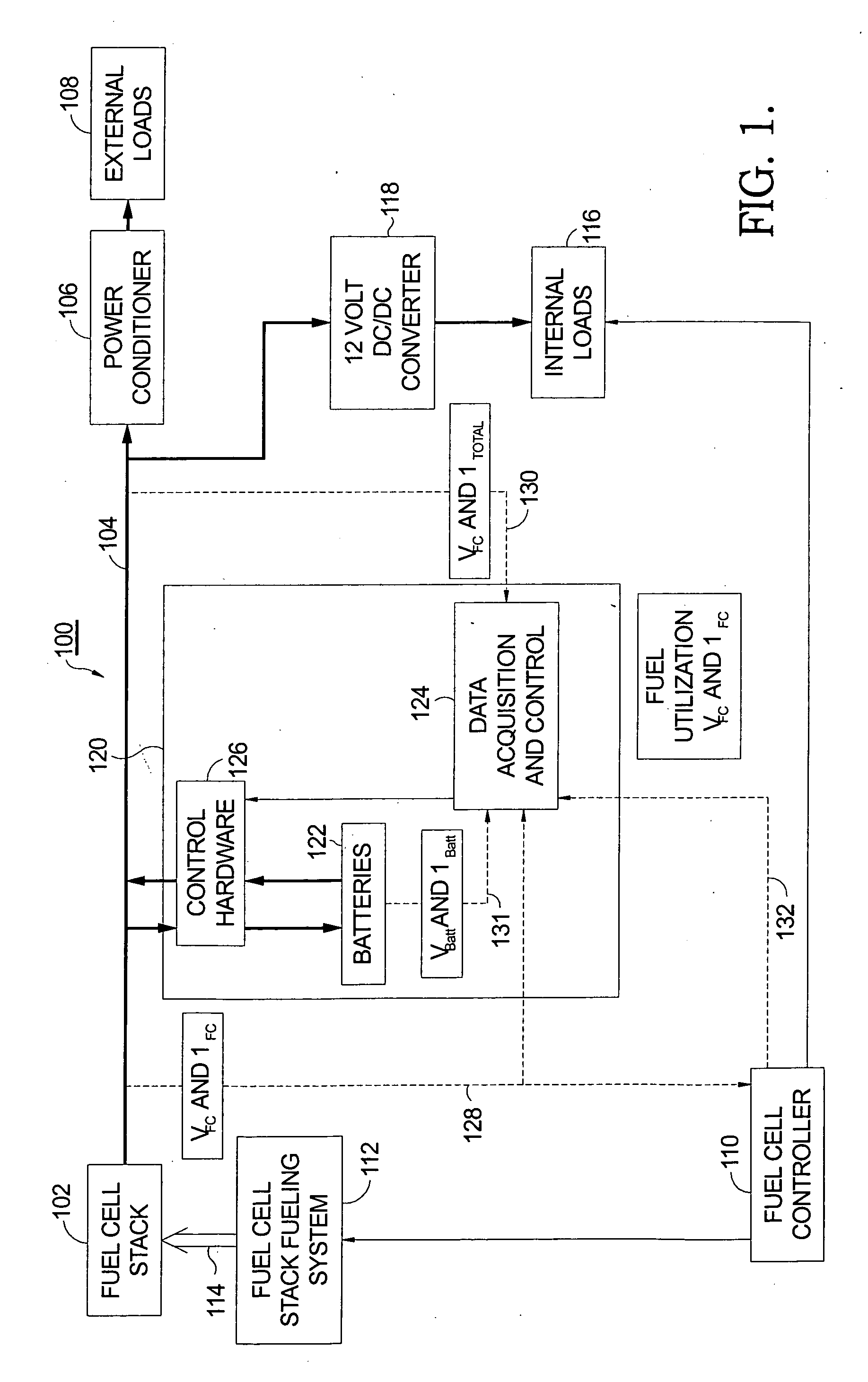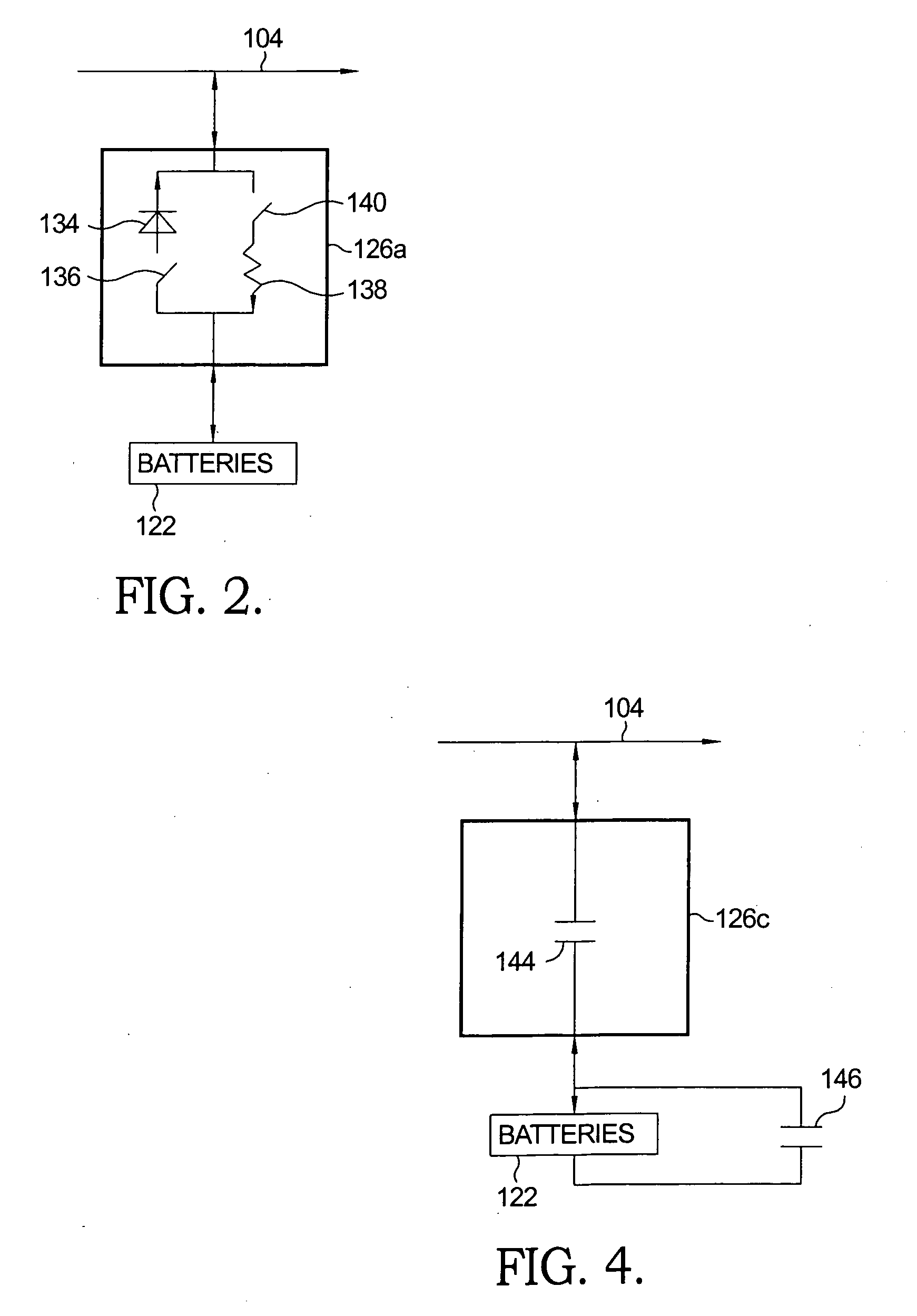Battery integration and control in an auxiliary power unit powered by a solid oxide fuel cell system
a fuel cell and auxiliary power technology, applied in battery/fuel cell control arrangement, secondary cell servicing/maintenance, electrochemical generators, etc., can solve the problems of damage to the fuel cell stack and the inability to provide the required power
- Summary
- Abstract
- Description
- Claims
- Application Information
AI Technical Summary
Benefits of technology
Problems solved by technology
Method used
Image
Examples
Embodiment Construction
[0021]As noted above, in the prior art of SOFC APU systems, the electrical load (internal parasitic plus external) on the APU must be carefully controlled. The principal reason why this is so is that the fuel cell stack tends to run above a certain voltage per cell, for too low a cell voltage can cause very high cell temperatures resulting in cell failure. The stack also tends to run below a ceiling value of fuel utilization.
[0022]A critical control challenge occurs in an APU when the electrical load transitions from idle to full load. Sensing this additional load by a system controller causes an increase in fuel flow; however, an inherent lag exists in providing increased flow of anode and cathode gases. In a known hydrocarbon reformer system for feeding fuel gas to the fuel cell stack, this time lag is approximately two seconds. As a result, the stack voltage per cell instantaneously falls, and can fall below a desired voltage floor. Moreover, the system will likely fall to a volt...
PUM
| Property | Measurement | Unit |
|---|---|---|
| time lag | aaaaa | aaaaa |
| voltage | aaaaa | aaaaa |
| voltages | aaaaa | aaaaa |
Abstract
Description
Claims
Application Information
 Login to View More
Login to View More - R&D
- Intellectual Property
- Life Sciences
- Materials
- Tech Scout
- Unparalleled Data Quality
- Higher Quality Content
- 60% Fewer Hallucinations
Browse by: Latest US Patents, China's latest patents, Technical Efficacy Thesaurus, Application Domain, Technology Topic, Popular Technical Reports.
© 2025 PatSnap. All rights reserved.Legal|Privacy policy|Modern Slavery Act Transparency Statement|Sitemap|About US| Contact US: help@patsnap.com



